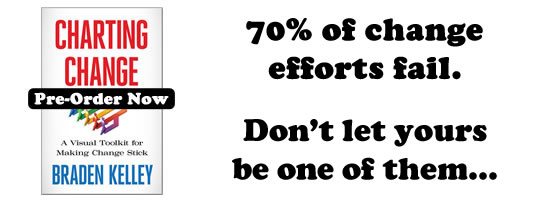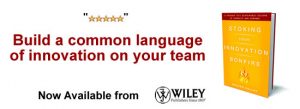Think Like Nature to Innovate
 Nature stores many business success lessons for those smart enough to see them. Companies that prove able to interpret and transfer creation’s learnings to its own culture prosper on an on-going basis.
Nature stores many business success lessons for those smart enough to see them. Companies that prove able to interpret and transfer creation’s learnings to its own culture prosper on an on-going basis.
When it comes to pragmatically producing innovations, businesses and people tasked with a new product or service pipeline would do well to take notes from the chrysalis process.
First, note the fragile eggs. If they are not on the right host, in the right environment, they die. These eggs include new incremental ideas, adjacent products or services, and breakthrough business ideas that change the landscape and create a new category and leadership position. At this stage, they all look the same, have a high mortality rate, and need care and support. They are nurtured by white boarding, customer co-creation workshops, and further discovery.
Second, see the larval caterpillar. Eric Caryle’s famous children’s classic The Hungry Caterpillar provides the right image for this stage. Here the hungry concept grows and eats, and molts and grows, and eats more. This stage of development is where the innovation concept is fed benchmarking studies, modeled out in different sizes, played with in workshops, and where financial cases are drafted. The concept is cared for via the imagination, potential, and excitement. Keep away from internal politics and cocoon the concept with access to a humble, separate budget if the prototypes and preliminary numbers look positive and realistic.
Third, the chrysalis: this is where the magic happens. Just as a Vespa could no more imagine itself transmuting into a Lear jet, the humble concept cannot envision itself taking flight. Here, all cells turn into liquid, totally fluid—do not lose sight of the significance of this metaphor: totally fluid. In this creative, primordial soup, they become the alchemical agent, known to science as “imaginal cells.â€
These imaginal cells transmute into something much bigger, more beautiful, and with a different nature than the original concept. The process, to extend our overarching analogy, happens when teams come together with a sense of mission and possibility and infuse the concept with radical perspective of what can be.
It is a visionary exercise and those who only criticize or only see limits and hurdles should not be allowed in the room at this stage. They are not fluid enough to learn to fly.
You know the end of the story: the sublime butterfly, new eggs, the process begins again. But, are you creative and smart enough to apply the age-old story to your business?
Can you access your imaginal cells and defy your original nature? Can your business fly?
Only the brave and the capable and the willing should try.
Wait! Before you go.
Choose how you want the latest innovation content delivered to you:
- Daily — RSS Feed — Email — Twitter — Facebook — Linkedin Today
- Weekly — Email Newsletter — Free Magazine — Linkedin Group
 Michael Graber is the cofounder and managing partner at Southern Growth Studio, a Memphis, Tennessee-based firm that specializes in growth strategy and innovation. A published poet and musician, Graber is the creative force that complements the analytical side of the house. He speaks and publishes frequently on best practices in design thinking, business strategy, and innovation and earned an MFA from the University of Memphis. Follow Michael @SouthernGrowth
Michael Graber is the cofounder and managing partner at Southern Growth Studio, a Memphis, Tennessee-based firm that specializes in growth strategy and innovation. A published poet and musician, Graber is the creative force that complements the analytical side of the house. He speaks and publishes frequently on best practices in design thinking, business strategy, and innovation and earned an MFA from the University of Memphis. Follow Michael @SouthernGrowth
NEVER MISS ANOTHER NEWSLETTER!
LATEST BLOGS
Starbucks and Big Tobacco
Back in the 1950’s smoking was glamorous, and just about everybody who was anybody smoked cigarettes. Then came the discovery, to the shock of millions, that sucking smoke into your lungs might not be good for you. Then came another revelation that one of the substances in tobacco, nicotine, which was used as a poison by the Egyptians during the times of the Great Pyramids, is addictive. People then began a mass exodus from the consumption of nicotine via inhaled smoke.
Read MoreWal-Mart Goes Green – What about your company?
With the price of gas above $3.00, some companies (and hopefully all) are beginning to look at the fuel efficiency of their fleets. Wal-Mart is the most public example of this with its trucking fleet. Its efforts include:
Read More



